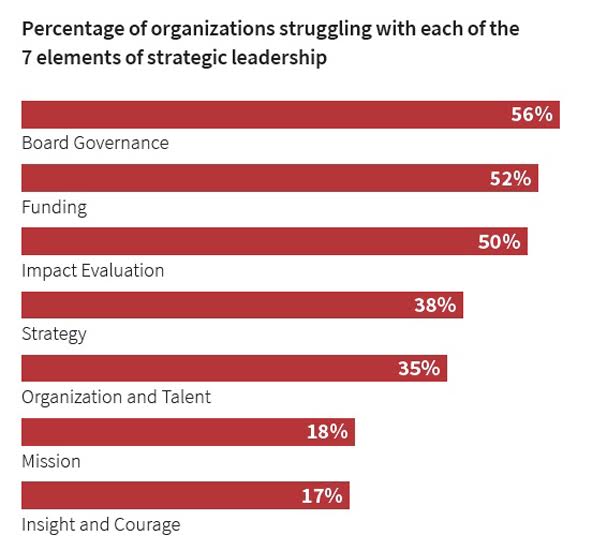The target audience of Engine of Impact includes executives and staff members at frontline nonprofit organizations whose work has the potential to yield tangible, measurable results. The chief goal of Bill Meehan and Kim Jonker in writing the book, in other words, was to inform and inspire those who are in a position to build, tune, and fuel a true “engine of impact.” Yet the authors acknowledge that nonprofits make up just one part of a system that in various ways fails to support the practice of strategic leadership.
 In an article for Stanford Social Innovation Review, Meehan and Jonker flesh out this critical point by describing steps that systems-level actors can take to enable nonprofit organizations to maximize their performance. The piece focuses on three of the seven components of strategic leadership—components that, according to findings from the Stanford Survey of Leadership and Management in the Nonprofit Sector, are most likely to pose a challenge for nonprofits. (See the chart above, which appears in the report on this survey.) Meehan and Jonker write:
In an article for Stanford Social Innovation Review, Meehan and Jonker flesh out this critical point by describing steps that systems-level actors can take to enable nonprofit organizations to maximize their performance. The piece focuses on three of the seven components of strategic leadership—components that, according to findings from the Stanford Survey of Leadership and Management in the Nonprofit Sector, are most likely to pose a challenge for nonprofits. (See the chart above, which appears in the report on this survey.) Meehan and Jonker write:
[W]hile individual nonprofits have work to do, they alone can’t accomplish the sector-wide transformation that is so necessary. Much of the work of building more effective organizations needs to start, in particular, with the board members who oversee nonprofits and with the donors who sustain them financially. Consider the three areas of performance [board governance, funding, impact evaluation] in which nonprofits are most likely to struggle. In each, influential players within the nonprofit sector can and must help nonprofits develop strategic leadership capabilities.
The article, “Filling Essential Gaps in Nonprofit Leadership,” is available here.